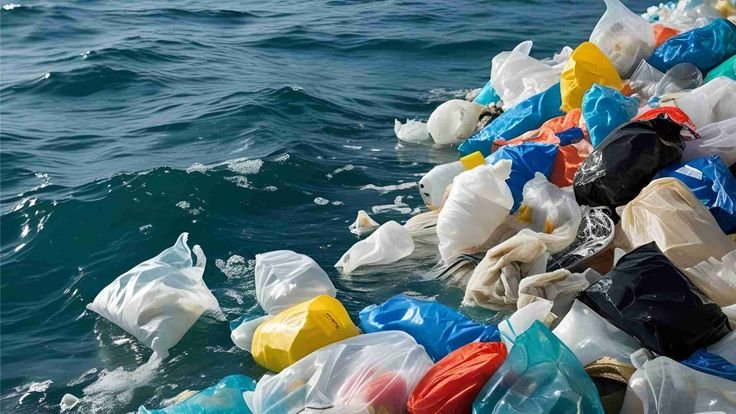The ocean, vast and full of wonder, has always been a symbol of life, mystery, and power. Yet beneath its shimmering blue surface lies a growing crisis — plastic pollution. Every year, millions of tons of plastic waste find their way into our oceans, suffocating marine life, disrupting delicate ecosystems, and even making their way back to our dinner plates. The “plastic ocean” is not just an environmental issue; it’s a global emergency that threatens the very balance of life on Earth.
The Rise of Plastic Pollution
Plastic was once hailed as a miracle material — durable, lightweight, and versatile. However, its very strength has become its greatest curse. Unlike organic materials, plastic doesn’t biodegrade; it breaks down into smaller and smaller pieces, known as microplastics, which persist in the environment for centuries.
An estimated 8 million tons of plastic waste enter the ocean each year. From discarded bottles and shopping bags to microbeads in cosmetics and fibers from synthetic clothes, plastic pollution comes from countless sources. Most of it begins on land, carried by rivers and wind, eventually making its way to the sea. Over time, it accumulates in massive “garbage patches,” like the Great Pacific Garbage Patch, which covers an area twice the size of Texas.
Marine Life Under Threat
Plastic pollution has devastating effects on marine life. Sea turtles mistake floating plastic bags for jellyfish, a favorite food. Seabirds feed plastic fragments to their chicks, believing them to be fish. Fish, crabs, and even plankton — the foundation of the ocean’s food web — ingest microplastics that accumulate in their bodies.
Once inside an animal, plastics can cause blockages, starvation, or poisoning from toxic chemicals. Studies have shown that nearly 90% of seabirds and 52% of marine turtles have ingested plastic. Whales, dolphins, and seals are also at risk, often becoming entangled in discarded fishing nets, ropes, and other debris — a slow and painful death for these majestic creatures.
Invisible Invaders: The Microplastic Menace
While large plastic items are easy to spot, the real danger often comes from what we cannot see. Microplastics, particles smaller than 5 millimeters, are now found in every corner of the ocean — from the surface waters to the deepest ocean trenches.
These tiny fragments absorb harmful pollutants like pesticides and industrial chemicals. When marine organisms ingest microplastics, these toxins enter the food chain — and eventually, humans. Scientists have even discovered microplastics in sea salt, drinking water, and the air we breathe. The long-term health impacts are still being studied, but early evidence suggests they could affect hormones, digestion, and immune systems.
The Human Connection
It’s easy to think of the ocean as distant and disconnected from daily life, but the truth is, our fates are intertwined. The ocean regulates Earth’s climate, produces over half of the oxygen we breathe, and provides food and livelihood to billions of people. When the ocean suffers, so do we.
Coastal communities that rely on fishing are facing dwindling catches due to pollution and habitat loss. Coral reefs, home to 25% of all marine species, are smothered by plastic debris. Even tourism, a major source of income for many nations, is affected as once-pristine beaches become littered with trash.
Cleaning Up the Mess
The good news is that global awareness of plastic pollution is growing. Organizations, scientists, and governments are working together to combat this crisis. Initiatives like The Ocean Cleanup Project are developing innovative technologies to remove plastics from the sea. Beach cleanups, recycling programs, and bans on single-use plastics are spreading worldwide.
However, cleanup alone is not enough. We must tackle the problem at its source — reducing plastic production and consumption. This means rethinking how we design, use, and dispose of materials. Alternatives like biodegradable packaging, reusable containers, and refill systems are becoming more accessible.
Sustainable Solutions for the Future
To truly protect marine ecosystems, we need global cooperation and lasting change. Governments must enforce stricter waste management systems and support sustainable innovation. Industries should adopt eco-friendly manufacturing practices, while individuals must make conscious choices in everyday life.
Simple actions — such as using a reusable water bottle, avoiding plastic straws, or participating in local cleanup efforts — can make a collective difference. Education and awareness are powerful tools; when people understand the impact of their actions, they are more likely to change them.
A Call to Protect Our Blue Planet
The ocean covers more than 70% of our planet and sustains nearly all life on Earth. Yet, we have treated it as an infinite dumping ground. If this continues, by 2050, there could be more plastic than fish in the sea by weight — a grim vision of the future we are creating.
But it’s not too late. The ocean has remarkable resilience if given a chance to recover. By protecting it, we are safeguarding our own survival and the legacy we leave for future generations.
Every piece of plastic we refuse, every cleanup we join, and every sustainable choice we make brings us closer to restoring balance to our planet’s greatest ecosystem.
Conclusion: Turning the Tide
The plastic pollution crisis reminds us of the delicate relationship between humanity and nature. The ocean has given us so much — food, inspiration, beauty, and life itself. It is now our responsibility to give back.
By changing our habits, supporting conservation efforts, and demanding accountability from industries and governments, we can turn the tide. The ocean’s story is far from over — and with collective action, it can still be one of recovery, renewal, and hope.
🌊 The sea connects us all — protecting it is not just an environmental duty but a moral one.


